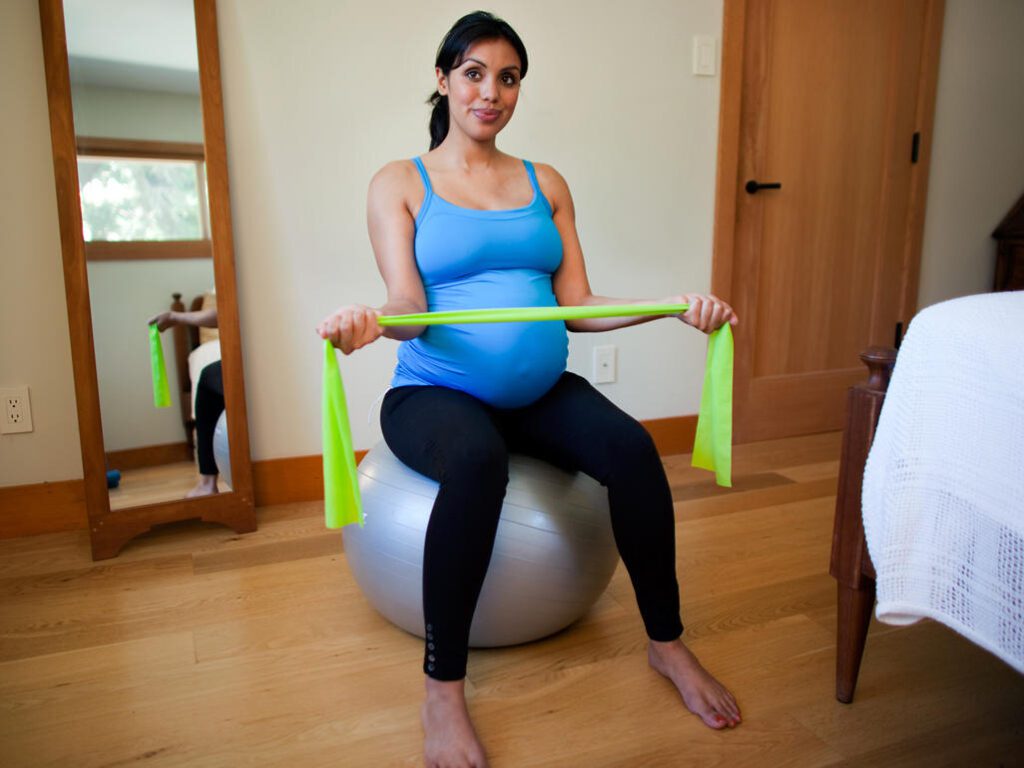Benefits of Exercise During Pregnancy: A Guide for Healthy Motherhood
Pregnancy is one of the most transformative journeys a woman can experience. Amid the excitement and changes, maintaining physical and emotional well-being becomes essential. One of the most effective and safe ways to support a healthy pregnancy is regular exercise. Contrary to outdated beliefs that women should avoid exertion while pregnant, modern science confirms that the right kind of exercise during pregnancy offers a multitude of benefits—for both mother and baby.
From improving cardiovascular health to preparing the body for childbirth, exercise is a vital component of prenatal care. In this blog, we will explore the benefits of exercise during pregnancy, touch upon the role of physiotherapy, and offer insights into how movement and therapy can support your pregnancy journey.
Top Benefits of Exercise During Pregnancy
Pregnancy can bring a range of physical challenges—from fatigue and nausea to back pain and swelling. Engaging in safe and supervised physical activity can help mitigate many of these discomforts while promoting overall well-being.
Key Benefits of Exercise During Pregnancy
Improved Mood and Reduced Stress : Regular exercise boosts the release of endorphins—feel-good hormones that combat stress, anxiety, and even prenatal depression. Gentle aerobic activities like walking, swimming, or prenatal yoga can do wonders for mental health.
Better Sleep Quality : Many pregnant women struggle with insomnia. Physical activity helps regulate sleep patterns and improves rest, which is critical for recovery and fetal development.
Reduced Risk of Gestational Diabetes and Preeclampsia : Staying active helps regulate blood sugar and blood pressure levels, significantly reducing the risk of gestational diabetes and preeclampsia—two common pregnancy complications.
Easier Labor and Delivery : Stronger muscles, better endurance, and improved breathing techniques can lead to shorter labor durations and fewer complications during delivery.
Faster Postpartum Recovery : Women who remain active during pregnancy often experience faster recovery postpartum, including quicker returns to pre-pregnancy fitness levels.
The Role and Benefits of Exercise During Pregnancy with Physiotherapy
While general exercise is beneficial, physiotherapy plays a unique role during pregnancy by offering targeted therapeutic movements and strategies to relieve discomfort, strengthen the body, and enhance function.
What Physiotherapy Do During Pregnancy?
Physiotherapy during pregnancy is tailored to address the changing biomechanics of a woman’s body. Physiotherapists evaluate posture, joint alignment, and muscular imbalances, and then design programs to:
Strengthen core and pelvic floor muscles
Relieve joint pain and muscle tension
Improve circulation
Address breathing difficulties
Prevent or manage incontinence
Pregnancy alters your center of gravity, often leading to back, pelvic, and hip pain. A physiotherapist can develop a personalized plan to help you adapt safely to these changes.
Are Physiotherapy Doctors Qualified for Prenatal Care?
The question “are physiotherapy doctors?” is a common one. While physiotherapists are not medical doctors, they are highly trained healthcare professionals, often holding degrees such as Doctor of Physical Therapy (DPT). They collaborate with obstetricians and midwives to ensure safe treatment protocols during pregnancy. Their expertise in anatomy and movement science makes them vital contributors to prenatal care.
Targeted Physiotherapy Exercises During Pregnancy
Physiotherapy is especially helpful for managing pregnancy-related aches and pains. Here are some evidence-based physiotherapy exercises and techniques that can help:
1. Physiotherapy Exercises for Lower Back Pain
Lower back pain is a common complaint among pregnant women, often due to increased lumbar curvature and pelvic tilting. Some effective exercises include:
Pelvic Tilts: Helps strengthen abdominal muscles and relieve pressure on the lower spine.
Cat-Cow Stretch: Enhances flexibility and relieves spinal tension.
Bridging: Strengthens glutes and stabilizes the pelvis.
Physiotherapists ensure these exercises are performed safely and effectively, minimizing risk while maximizing relief.
2. Physiotherapy Exercise for Knee Pain
As pregnancy progresses, added weight and hormonal changes can strain the knees. Physiotherapy exercises for knee pain focus on joint stabilization and muscle balance:
Quadriceps Strengthening (e.g., wall sits): Reduces pressure on the knee joint.
Hamstring Curls: Promote posterior leg strength to support better posture.
Leg Raises: Strengthen surrounding muscles without straining the knees.
These exercises are often combined with gentle stretching to maintain flexibility and reduce stiffness.
3. Physiotherapy Chest and Breathing Techniques
Breathing becomes more challenging as the baby grows. Physiotherapy chest exercises can help expand lung capacity and improve oxygen flow:
Diaphragmatic Breathing: Encourages full oxygen exchange and calms the nervous system.
Thoracic Expansion Exercises: Improve rib mobility and respiratory efficiency.
A physiotherapist can also teach postural techniques to open the chest and alleviate breathlessness.
Safety Considerations and When to Avoid Exercise
While there are Benefits of Exercise During Pregnancy but, it’s essential to consult your obstetrician or a trained physiotherapist before beginning any program. Avoid exercise if you have:
A history of premature labor
Placenta previa after 26 weeks
Severe anemia
Uncontrolled hypertension
Significant heart or lung disease
Always listen to your body. Pain, dizziness, or shortness of breath are signals to stop and seek medical advice.
How Benefits of Exercise During Pregnancy Delivers Best Results
You may wonder about physiotherapy results—especially when investing time and effort during a physically demanding time. The outcomes are not just short-term relief but long-term health benefits, including:
Improved pelvic alignment and posture
Lower risk of incontinence
Reduced need for pain medication
Enhanced ability to manage labor and delivery
Accelerated postpartum healing
With the right guidance, physiotherapy enables a more comfortable, confident, and resilient pregnancy experience.
Integrating Physiotherapy with Lifestyle Choices
To make the most of prenatal exercise and therapy, combine physiotherapy with:
Proper Nutrition: Fuel your body with iron-rich foods, whole grains, and lean proteins.
Hydration: Water aids circulation and reduces swelling.
Mindfulness Practices: Meditation, journaling, and prenatal yoga help manage stress.
Supportive Footwear: Reduces joint impact and improves balance.
Creating a routine that balances all these elements will set the stage for a healthier pregnancy and smoother postpartum journey.
Conclusion
Exercise during pregnancy isn’t just about staying fit—it’s a vital part of nurturing your body and mind during a time of significant change. With expert support from a physiotherapist, you can manage common pregnancy complaints like back and knee pain, improve your breathing, and prepare effectively for labor.
Whether you’re curious about what physiotherapy do, wondering are physiotherapy doctors, or seeking physiotherapy results, know that integrating movement and therapy into your prenatal routine can make a profound difference. From physiotherapy chest techniques to physiotherapy exercises for lower back pain and knee pain, you have a full toolbox of safe, effective options to support your pregnancy.
Always consult with your healthcare provider and consider working with a physiotherapist specialized in prenatal care. Your body is doing amazing work—give it the strength and support it deserves.




